
The League of Corinth, also referred to as the Hellenic League, was a federation of Greek states created by Philip II in 338–337 BC. The League was created in order to unify Greek military forces under Macedonian leadership (hegemony) in their combined conquest of the Persian Achaemenid Empire.

Pieria is one of the regional units of Greece located in the southern part of the Region of Central Macedonia, within the historical province of Macedonia. Its capital is the town of Katerini.The name Pieria originates from the ancient Pieres tribe. In Pieria, there are many sites of archeological interest, such as Dion, Pydna, Leivithra and Platamonas. Pieria contains Mount Pierus, from which Hermes takes flight in order to visit Calypso, and is the home of Orpheus, the Muses, and contains the Pierian Spring. Mount Olympus, the highest mountain in Greece and throne of the ancient Greek gods, is located in the southern part of Pieria. Other ancient cities included Leibethra and Pimpleia.

The Pieres were a Thracian tribe connected with the Brygi, that long before the archaic period in Greece occupied the narrow strip of plain land, or low hill, between the mouths of the Peneius and the Haliacmon rivers, at the foot of the great woody steeps of Mount Olympus. This region was named after them as Pieria.
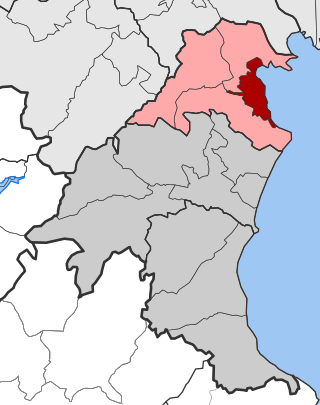
Methoni is a village and a former municipality in Pieria regional unit, Greece. Since the 2011 local government reform it is part of the municipality Pydna-Kolindros, of which it is a municipal unit.
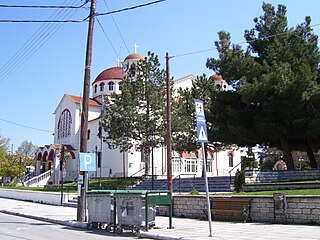
Amyntaio, is a town and municipality in the Florina regional unit of Macedonia, Greece. The population of Amyntaio proper is 4,306, while that of the entire municipality is 16,973 (2011). The town is named after the ancient king of Macedon, and father of Philip II and grandfather of Alexander the Great, Amyntas III.
The Greeks in Hungary constitute one of the thirteen officially recognized ethnic minorities in Hungary since The Rights of National and Ethnic Minorities Act was enacted by the Hungarian parliament on July 7, 1993.
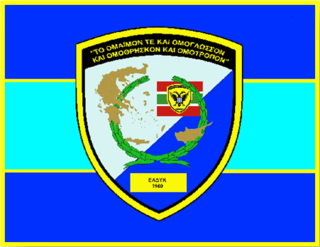
The Hellenic Force in Cyprus, commonly known in its abbreviated form as ELDYK or EL.DY.K. is the permanent, regiment-sized Greek military force stationed in the Republic of Cyprus. Its role is to help and support the Cypriot National Guard. Soldiers are selected from the ranks of conscripts doing their military service in the Greek army.
Thraco-Macedonian is a conventional name in the study of ancient history to describe the political geography of Macedonia (region) in antiquity. It may refer to:

Pyrgoi is a village and a community of the Eordaia municipality. It is located in Northern Greece, in the region of Western Macedonia. Before the 2011 local government reform it was part of the municipality of Vermio, of which it was a municipal district. The 2021 census recorded 745 inhabitants in the village.
Menelaos Lountemis was the pen name one of the most important essayists in the Greek interwar period and post-World War II era. His pen name was inspired by his later homeland's river Loudias.
The Metropolis of Kitros, Katerini, and Platamon is an Eastern Orthodox metropolis of the Church of Constantinople, but is de facto is administered for practical reasons as part of the Church of Greece.
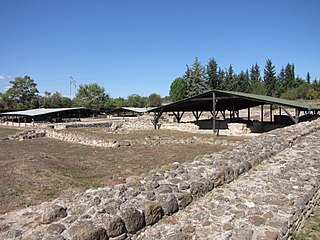
Louloudies is an archaeological site in Pieria, northern Greece. It comprises a fortified bishop's seat from the Byzantine era, discovered during the construction of the railway line between Athens and Thessaloniki.

Pydna was an ancient Greek city in what is now the regional unit of Pieria, Central Macedonia, Greece. It is an important place in the history of Pieria and a major archaeological site located directly at the Aegean Sea, 16 km northeast of Katerini, 28 km north-east of Dion and 2.5 km from the village of Makrygialos. Nearby are two Macedonian tombs, discovered by the French archaeologist Heuzey during his Greek travels in the mid-19th century. Furthermore, the fortress-like bishop's seat Louloudies is located a few kilometers south of Pydna.
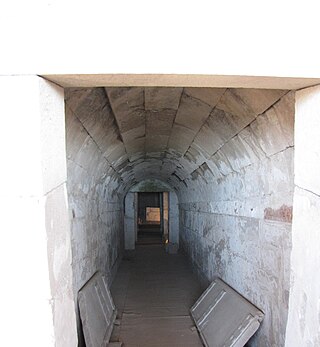
In the middle of the 19th century, an important Macedonian tomb, now known as Tomb A, was discovered near the Greek village of Korinos, at the site of ancient Pydna. In 1991 a second, smaller grave was discovered and excavated.

Ancient Methone, also called Thracian or Macedonian Methone to distinguish it from Messenian Methone was a polis in Ancient Greece, near the city of Pydna and the modern village of Nea Agathoupolis in Pieria. According to Plutarch, Methone was founded as a Greek colony in the year 733/732 BC. Methone gained special importance by the finding of labeled pottery and potsherds. It is one of the oldest testimonies of Greek writing and an important place in the history of Pieria.

At works to recover clay, two Macedonian tombs were discovered north of Katerini.

This is a reflection of the main historical events in Pieria (Πιερία), Central Macedonia.
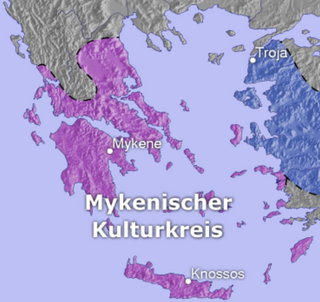
Among the first archaeological sites discovered in Mount Olympus was the excavation site Spathes. It is a necropolis from the Late Bronze Age. The oldest tombs are from the 14th century BC, the last traces of the use were found from the end of the 13th century, the beginning of the 12th century BC. The settlement, associated with the necropolis, has not been found. Many of the burial offerings were made in the Mycenaean style, so that the Mycenaean cultural circle probably also extended over the border of Thessaly to Pieria.
Pigi Artemidos is a Bronze Age settlement.
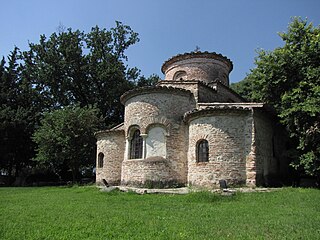
Panagia Kontariotissa or Kountouriotissa, formally the Church of the Dormition of the Theotokos, is a very well preserved Byzantine monument in Pieria, Greece. "Kontariotissa" refers to the name of the modern community that originated near the church.


















